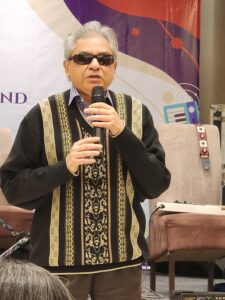
Lighting plays a vital role in making a building user friendly or otherwise. It’s a significant component of indoor environmental quality encompassing health, safety and comfort related issues of the building users. You certainly cannot consider a building green if it doesn’t use green lighting methods. Let us go a little deeper into the subject, and you will understand what we mean.
Sunlight- a necessity:
We all know that the natural sunlight not only provides vitamin D, essential to keep us healthy and our bones strong, it also protects us from harmful bacteria and is a very effective disinfectant. However, the modern-day lifestyle leaves little scope for us to spend time outdoors and it becomes imperative that we give a thought to the fact that the indoor lighting could also have an impact on our health.

Our lifestyle and indoor lighting:
Gone are the days when people spent a lot of time outdoors engaging in physical labor and other outdoor activities. Today we spend nearly 90% of our time within the four enclosed walls of our comfortable homes or offices; naturally it’s not prudent to overlook the importance of indoor lighting. Studies show that well-designed lighting can indeed increase occupant mood, contentment and productivity. It is, therefore, necessary to discuss in depth about lighting design considerations for our buildings.
Design considerations:
There are several factors to be considered while designing for green lighting. One has to ensure comfort and good health including the eyes of the users; and then there is the energy consumption to be taken care of. Let us take a look at some of the lighting strategies that really work.
- Use of daylighting:
We have already discussed the benefits of the daylight; it’s essential to use it to the greatest extent possible to reduce our dependence on artificial lighting. It is very much possible to lit some spaces of a building with daylight reducing our energy consumption besides making the interior spaces healthier. This can be achieved by thoughtfully arranging the rooms and partitions so that they receive daylighting for longer periods of time. Office buildings should have private cabins pooled in the center surrounded by the open offices, thus allowing the daylight to penetrate a larger area of the structure. Steps like providing skylights and solar tubes can help bringing in more light to darker areas on top floors or even on lower floors if a kind of atrium is created. Providing concave lenses sandwiched between two layers of transparent glass in the top panels of windows also allows daylight to penetrate deeper into the building.
- Optimum level of lighting:
Each space should get the amount of light required for the purpose it serves. It’s essential to strike a perfect balance between ambient lighting (background lighting) and task lighting (targeted at specific work stations). The amount of ambient lighting can be reduced if task lighting is appropriate, thus reducing energy consumption.
- Avoiding contrast and glare:
While taking care of brightness and placements of light fixtures, we must also try to control contrast and glare to ensure comfort to the eyes of the users. Dark finishes should be avoided in the work areas and position of light fixtures should be such that tall shelves or panels don’t create shadows.
- Lighting controls:
Lighting controls are a very important aspect of green light designing. Grouping the right fixtures at one place can help you reduce energy consumption. Similarly, using motion sensors can save a lot of energy consumption by switching off light fixtures when no one is present to use them. Having automatic night dimming controls and other such devices can go a long way in making a building green.
There are more ways for saving energy and reducing your electricity bills like using star rated electric appliances and energy efficient lamps like LEDs etc. The amount of electric power can be reduced by strategically placing the fixtures and using light upgrades. Employing every energy saving approach can actually be a life saver; you don’t just save money on your bills, you save the environment , you save yourself.
Sources:
https://www.studiobinder.com › Directing › Video Gear
https://www.treehugger.com › … › Home › Green Living
https://www.litepanels.com › Home › Applications
https://www.lightology.com/index.php?module=how_to&sub=sustainable-lighting-tips
https://i.pinimg.com/736x/7c/e9/8c/7ce98c0100f07c45bed03c97a7e84f25
ABOUT THE AUTHOR

Sandeep Singh is an architect from IIT Roorkee.
Ten years after graduating, he lost his vision to genetic Diabetes.
He reinvented his career and turned writer.
He has authored two fiction books and writes blogs on
Architecture, Outsourcing, Safety and a variety of other
subjects for different organizations. He also chairs and runs two NGOs
